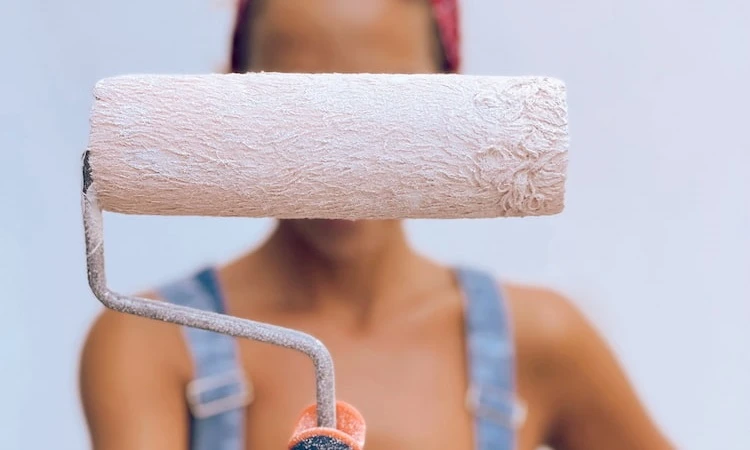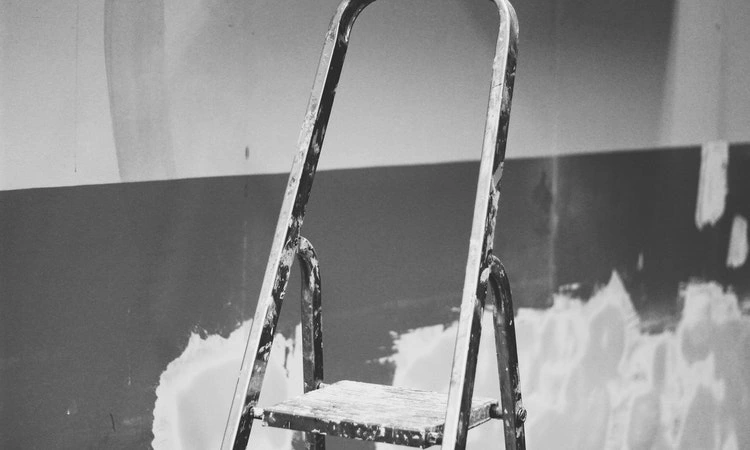Throughout my career, I have had to fix many repairs with spackle. The homeowner could have done the majority of the repairs.
However, the homeowners have stated they simply did not have the time to let the spackle dry. So just how long does spackle take to dry?
Many brands of spackle will dry within 1 to 2 hours. Some fast-drying types of spackle are advertised to dry within 15 to 30 minutes. With that being said, it is recommended to wait a full 24 hours before you sand or paint the spackle.
Each container of spackle will state how long it takes to dry. That drying time is often determined by lab testing.
A lab can control the environment better than you can in your home. And there are several factors outside of your control that can determine how long spackle takes to dry.
This article will explain the different factors affecting the spackle’s drying time.
I will also give you some tips on how to speed up the drying time. But first, what exactly is spackle?
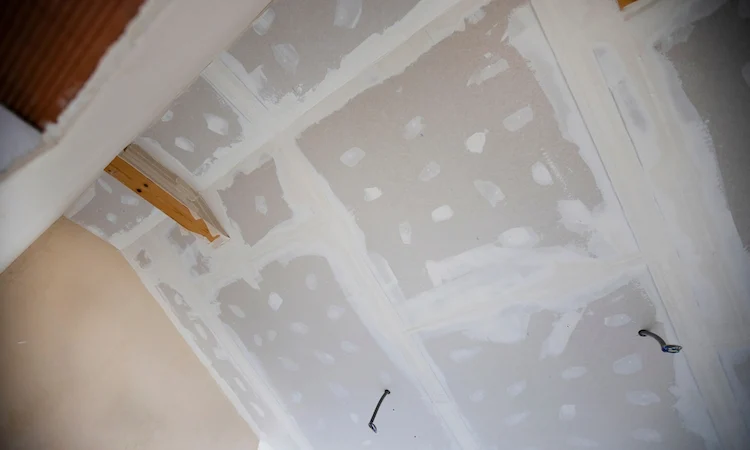
What is Spackle?
Spackle is a product that was designed to fill holes and dents. It was created to repair drywall before repainting. A new paint job will not sufficiently cover up the previous damage.
Spackle is used to fill in the damage and make the wall flesh again.
Spackle will also increase the adhesion ability of your paint. If you paint over a crack, the paint will likely peel.
All paints need a smooth and cohesive surface to adhere properly and be long-lasting.
Spackle is not designed for large projects or repairs. It does dry relatively quickly, making it difficult to use for large repairs.
Spackle should be used for small damage caused by screws or other small dents around the house.
A product called joint compound is often used for larger projects. These two products are often used interchangeably, but they are very different.
Why Does Spackle Have to Dry Before Painting?
It is important to let the spackle fully dry before you paint it. When you paint over wet spackle, both the spackle and paint can begin to peel.
This occurs because neither substance was able to adhere properly to the wall.
It is also possible for the spackle to mix with the paint. If the spackle mixes with the paint, it can cause streaking, affecting the color of the paint.
The spackle can also become clumpy and break into chunks while painting it.
The majority of labels on the spackle will state that it will be dry within a couple of hours.
However, professionals do recommend waiting a full 24 hours before painting. The 24 hours will allow the spackle to dry and be ready for paint properly.
How Long Does Spackle Take to Dry?
Every brand and type of spackle on the market has a varying drying time. There are fast-dry spackles that can dry within a couple of minutes.
However, most spackles will take one to two hours to dry fully.
Temperature and humidity can play a role in how long it takes the Spackle to dry. The thickness of the spackle will also play a role in how long the spackle takes to dry.
Thin Spackle Drying Time
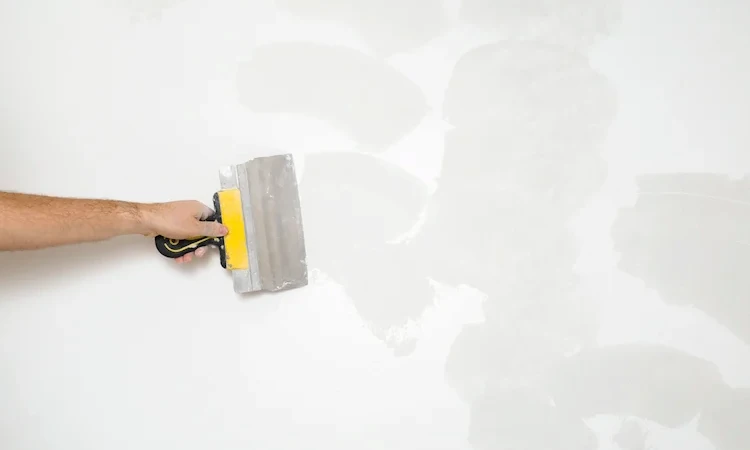
Are you covering up a small nail hole and want to know how long it will take the spackle to dry?
Fortunately for you, it will often not take very long. The thinner and smaller the spackle you use, the quicker it will dry.
Why does thin and small patchwork dry faster? There are a couple of reasons for this. One, you are covering a smaller surface area.
Two, you only use a small amount of spackle. These two factors allow the spackle to dry relatively fast.
It is still recommended to wait an hour or two, depending on your spackle. Even though you are covering a small area, the spackle still needs to dry before being covered in paint fully.
Do not worry, though; in a little bit, I will tell you how you can tell if the spackle is fully dry.
Thick Spackle Drying Time
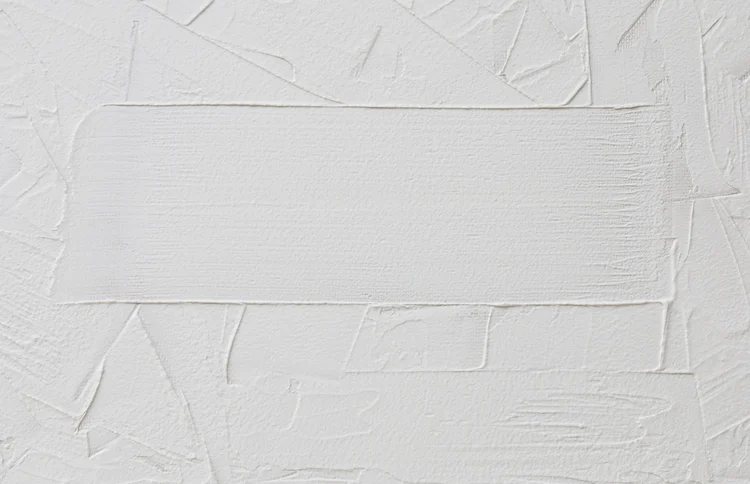
If it takes a shorter amount of time for thin projects to dry, then it makes sense that bigger projects will take longer.
Unfortunately, when you spackle large holes and dents, you often need a thicker layer of spackle.
You should not skimp out on the spackle to save yourself drying time. You still want the spackle to fully cover the crack or dent and make it flesh with the rest of the wall. You can and should glob on more spackle than you need.
When you apply spackle, you always start with more than you need. Once you have roughly covered up the dent, you can flip your putty knife over to the clean side. Then you will glide the clean side across the spackle.
This action will thin and even out the spackle. What about the extra spackle on your putty knife? You do not have to throw away the spackle you did not use.
You can scrape the unused spackle back into the container. Or you can throw it away if you are not too concerned about saving every bit of the spackle.
The spackle will take a lot longer to dry because of the volume of spackle you use. Think about how quickly water evaporates after a light sprinkling versus a downpour.
The volume of the spackle and the project’s size are big factors in how long it will take the spackle to dry.
How Do You Know if Your Spackle Has Fully Dried?
Many spackles change color when they are ready to be sanded and painted.
You can purchase dry time indicator spackling.
It often goes on to the wall pink and will turn white once it is dry.
If you do not purchase dry indicator spackle, there is another way you can determine if it is fully dry.
The spackle is dry when you can lightly touch it, and you do not leave behind any fingerprints.
The label on the spackle should tell you how long it will take to dry.
People often choose to wait longer when not using dry time indicator spackle. It will not hurt the spackle to let it sit for a couple more hours.
Reasons Why Your Spackle Isn’t Drying
There are a couple of reasons why your spackle may not be drying. The most common reason is that it is too humid for the spackle to dry.
Below, I will describe some of the most notorious things preventing spackle from properly drying.
High Humidity
A humid environment is one of the top contributors to spackle not drying.
Humidity means water in the air is not properly evaporating. Spackle contains water in it. Yes, even the premixed spackles contain water.
You cannot expect the water in the spackle to evaporate if the water in the air is not evaporating.
Have you ever stepped outside and could just feel the humidity on your skin? It feels like the air is not moving, and moisture accumulates on your skin.
If you are spackling outside, you should ensure the weather is not too humid.
If you are spackling a hole inside your home, you can have more control over the humidity. Later, I will tell you how you can speed up the drying time.
Spackle Layer Thickness
More is not always better, especially with spackle drying time. You do want to start with more spackle than you need.
However, you should thin out the surface during the application and make it flesh with the rest of the wall.
Watch this video to learn how to apply spackle properly.
If you leave a giant glob of spackle on the dent, you create more work for yourself.
The spackle will take significantly longer to dry because you have a larger amount. But you will also create a messier project.
The spackle needs to be sanded before you can paint it. If your spackle sticks out and is not flesh, you will be sanding for a long time.
When you apply too much spackle, you are left with more dust and a sore arm at the end of the day.
If you want your spackle to dry in a normal time frame, follow the previously described steps on how to apply spackle. You can always add more spackle later if you feel the repair is not flesh.
Applying a second layer while the first one is drying is better than applying an astronomical amount of spackle.
Depth and Size of the Repair
I have previously discussed how thin and small projects will dry faster than larger projects requiring a thick layer of spackle.
There is not nothing you can do to avoid this issue. But, it is something to keep in mind simply.
Most drying times listed on spackle labels assume you cover a larger or deep repair. If you are covering up a hole with a regular screw, it will not take as long to dry as the label says.
On the other hand, repairing a hole caused by a drywall anchor will take hours to dry fully.
How to Speed Up Spackle Drying?
You may not have several hours to wait for your spackle to dry. Or maybe your spackle is taking longer than expected to dry.
Thankfully, there are a few things you can do to help speed up the drying time of your spackle.
Please know that none of these is a guaranteed quick fix. That means none of these methods will instantly dry your spackle. You may need to try multiple methods to dry the spackle fully.
Dehumidifier
Every spackle contains water in the mixture. Spackle will not dry if it is in a humid environment. You can place a dehumidifier in the room to remove excess moisture.
The dehumidifier will help the spackle dry faster whether you are in a humid environment or not.
Turn on the AC
Your air conditioner can help dry out the air in the room you are working in. Dry air means there is little to no water in the air, which is great for the spackle.
When there is less water in the air, the water in the spackle has somewhere to evaporate.
Use Fans
You can add fans to the room to help circulate the air and speed up spackle dry time.
Fans are not as efficient as other methods, but they work when you have no other option. The fans will help keep air circulating over the spackle.
As long as the air is circulating around the spackle, it will dry in a decent amount of time.
You may need to use a fan that turns if you are drying multiple repairs. Otherwise, a box fan pointed toward the patchwork will work fine.
Hairdryer
A hairdryer can be used for small spackle repair projects. You can use a hair dryer set at a cool temperature.
You do not want to use the highest heat setting on the spackle. The higher heat setting can cause damage instead of drying the spackle.
When the spackle dries too quickly, it will not hold up as long. The spackle can begin to crack during the drying process if it is dried too quickly.
Steps for using a hairdryer to dry spackle:
- Turn the hairdryer on to the lowest heat setting.
- Wave the hairdryer over the spackled area for a minute or two. You must continue to move the hairdryer. You do not want to let it sit in one area.
- Turn the hairdryer off and allow the spackle to return to room temperature
- Repeat the process as needed.
Use Fast Drying Spackle
The easiest way to speed up the spackle drying time is to use a fast-drying spackle.
Fast-drying spackles dry faster than normal spackles.
Most of them will be dry within 15 minutes compared to the several hours it can take normal spackle to dry.
DAP’s fast-drying spackle dries 8x faster than other spackles.
It also has 3x stronger impact resistance when compared to other brands.
It has a long-lasting formula that will not dry out, and you can sand and paint over it with any kind of paint.
What Happens if You Paint Over Wet Spackling?
If you paint over wet spackle, the paint can peel because it cannot adhere to the wall properly.
Paint, especially oil-based paints, has been known to dry dull when painted on wet spackle.
The paint dries dull because the underlying wet surface absorbs the oils. This is another reason you should let the spackle fully dry before painting it.
Also, if you want a smooth finish, you must sand the spackle before painting it.
Have you ever tried sanding a wet surface? It is not an easy task. You often end up with a giant mess and a sore arm.
When you sand a dry surface, you get dust everywhere, but you end up with a milky substance when you sand a wet surface.
Dust is a lot easier to clean up than a semi-liquid substance. The sandpaper will also turn mushy and become difficult, if not impossible, to use. Please note there is a huge difference between wet sanding and sanding down a wet surface.
FAQS: Spackle Drying Time
You may still have a couple of questions about drying spackle.
Hopefully, I have answered most of your questions. Still, just in case, I will answer a few more commonly asked questions.
1. Does Spackling Dry Hard?
Spackle may be able to sit in a tub or container for years without ever drying into a hard substance.
However, it will dry hard when it is used for repairs. The spackle needs oxygen to dry and turn into a hard surface.
You do not want the spackle to form a hard substance while it sits in the container.
Most DIY renovators do not require the use of spackle very frequently. Therefore, they want the spackle to remain a semi-soft substance until they need it.
On the other hand, they also want the spackle to have the same strength and durability as the rest of their walls.
For this reason, spackle will dry into a hard substance once exposed to air and, more specifically, oxygen.
2. Can You Moisten Dried Spackle?
Did you accidentally leave the tub to your spackle container open? You may be afraid the spackle is a goner and you need to buy a whole new tub. But what if I told you that you could moisten the dried spackle?
Spackle exposed to air can dry up, but it can also be used again by adding water. You cannot moisten spackle that has already dried on your repair patch. Technically, you could moisten it, but it is not recommended.
If you messed up your patch job, you are better off sanding down the surface and starting over.
Moistening the spackle will not work very well because you need to mix the water into the spackle and not simply place water onto the spackle.
Here are the steps to moisten your container of spackle:
- Use a screwdriver or flathead to break up the spackle. You will want the spackle to be in small marble-sized chunks.
- Start pouring increments of ¼ cup of warm water into the container. You need to mix up the container between each increment of water. The chunks of spackle should slowly become smaller.
- After adding a few increments of water, you can grab a putty knife and start breaking up the chunks of spackle. You will have to continue mixing and breaking up the mixture until all chunks are gone. At this point, if you need more water, you should only add 1 tablespoon at a time. You can always add more water, but you can not remove water if you pour in too much.
3. Can You Spackle and Paint on the Same Day?
Theoretically, you can paint and spackle on the same day. The majority of spackles are fully dry within a couple of hours.
And the fast-drying spackles will be dry within 15-30 minutes. With that being said, many professionals still recommend waiting a full 24 hours to paint and sand the spackle.
Twenty-four hours will ensure the spackle is fully dry and ready for paint.
It will also decrease the risk of the spackle cracking prematurely. The time frame will help ensure the paint can properly adhere to the spackle repair.
Verdict
Most spackles will be dry within a couple of hours. You can purchase a spackle that changes color as it dries.
Or you can touch the spackle and see if you leave behind a fingerprint. If you leave a fingerprint, then the spackle is not fully dry.
Humidity, the thickness of the spackle, and the repair depth can all affect how long it takes for the spackle to dry.
Lucky for you, you can use a dehumidifier, AC unit, fans, and a hairdryer to speed up the drying time of the spackle.



